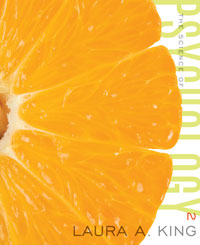1 A) randomly approaching students in the student union B) randomly selecting three classrooms and including all the students in those classrooms in the sample C) randomly selecting students from a listing of every student in the university D) randomly selecting students from the incoming class 2 A) the 200 African American women she interviewed B) all Americans C) all African Americans D) all African American women 3 A) The treatment group is the dependent variable; depression is the independent variable. B) Depression is the dependent variable; the treatment group is the independent variable. C) Depression is the dependent variable; cognitive-behavioral treatment is the independent variable. D) Cognitive-behavioral treatment is the dependent variable; depression is the independent variable. 4 A) a laboratory study. B) naturalistic observation. C) an experiment. D) a survey study. 5 A) experiment. B) laboratory study. C) survey. D) naturalistic observation. 6 A) positive correlation. B) independent variable. C) negative correlation. D) dependent variable. 7 A) experimenter bias. B) participant bias. C) location bias. D) experimenter and participant bias. E) All of the answers are correct. 8 A) a correlational design. B) an experiment. C) a survey. D) a case study. 9 A) people do not always know themselves well enough to answer the questions. B) people may answer in a way that makes them look good instead of honestly. C) making sure questions are clearly worded. D) generalizability of your one respondent to your overall population. 10 A) the group that receives the phonics training B) the group that received no training C) the sample D) the population 11 A) the probability that a research finding happened by chance. B) the mean. C) the measure of central tendency. D) the measure of dispersion. 12 A) informed consent B) debriefing C) confidentiality D) All of the answers are correct. 13 A) through correlation B) through an experiment C) through inferential statistics D) None of the answers are correct. 14 A) participant bias B) experimenter bias C) ethics D) All of the answers are correct. 15 A) ecological validity B) lack of participant bias C) control of extraneous variables D) observation in a naturalistic setting 16 A) happiness B) life satisfaction C) optimism D) reading material 17 A) External validity B) Internal validity C) Experimenter bias D) Operational definition 18 A) an naturalistic observation study. B) a longitudinal study. C) ecological validity. D) the third variable problem. 19 A) a theory. B) a hypothesis. C) a correlational research design. D) naturalistic observation. 20 A) it does not lead to information about causality B) it opens itself to ethical issues C) it has higher instances of the placebo effect than correlational research D) it cannot overcome the third variable problem





